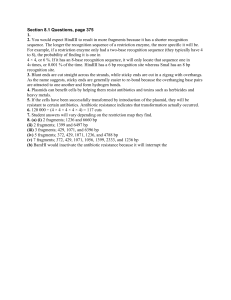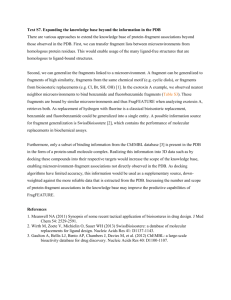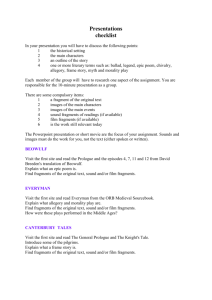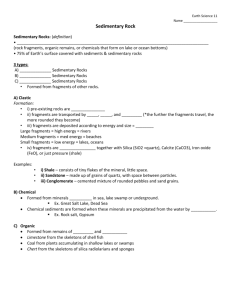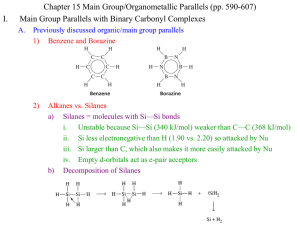Revised Toluene_JCP_Supplementary
advertisement
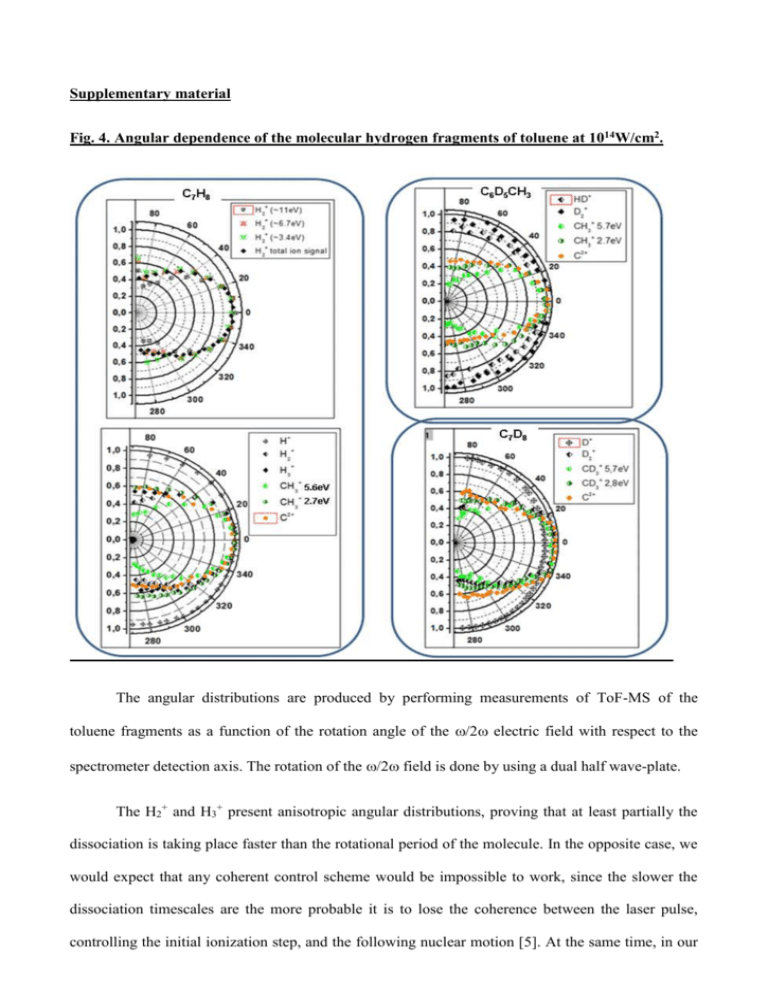
Supplementary material Fig. 4. Angular dependence of the molecular hydrogen fragments of toluene at 1014W/cm2. The angular distributions are produced by performing measurements of ToF-MS of the toluene fragments as a function of the rotation angle of the /2 electric field with respect to the spectrometer detection axis. The rotation of the /2 field is done by using a dual half wave-plate. The H2+ and H3+ present anisotropic angular distributions, proving that at least partially the dissociation is taking place faster than the rotational period of the molecule. In the opposite case, we would expect that any coherent control scheme would be impossible to work, since the slower the dissociation timescales are the more probable it is to lose the coherence between the laser pulse, controlling the initial ionization step, and the following nuclear motion [5]. At the same time, in our case we are measuring the anisotropy on the directional emission of the ejected fragment ions with respect to the direction of the asymmetric two-color field. Therefore, a slower dissociation pathway would be impossible to present such dependence, if the transient precursors have enough time to fully rotate scrambling the “forward” and “backward” fragments with respect to the molecular frame. The HD+ and D2+ do not present angular dependence or /2 phase. This would be somewhat contradicting to the fact that they present similar kinetic energy distributions with the H2+, H3+, D2+ and D3+ (except for the high kinetic energy component ~11eV). A much slower timescale or comparable to the toluene rotational period (~tens of ps) for the release of HD+ and D2+ species, should affect the kinetic energy of the fragments, since there would be enough time for sufficient internal vibrational relaxation (IVR) to take place and transfer part of the excitation energy associated with the process to vibrational degrees of freedom [35]. Alternatively, the fact that no angular dependence is apparent might be related to the fact that the D atoms are distributed almost symmetrically along the plane of the molecule at least in the ground state geometry. Therefore, the HD+ and D2+ fragment ions might present an anisotropic emission with respect to the molecular plane and not a specific direction. This scenario would require that the migration is related to geometry of the transient species not far from that of the ground state. The proposed hypothesis would be in accordance with the findings of our previous experimental work with single color pulses on C6H6, 1,2-C6H4D2 and 1,6-C6H4D2 [26], where a strong dependence of the formation of HD+, D2+ and H2D+ on the position of the participating H and D atoms in the benzyl ring was observed. On the contrary, it is known that a specific isomerization processes, taking place in the doubly charged ionic manifold for benzene, leads to the formation of CH2D+ and CHD2+ molecular fragments in a time scale much slower than the rotation motion [26]. In the particular case, the fragments are ejected isotropicaly and their formation efficiency exhibits no dependence on the initial position of the H, D atoms within the benzyl ring (H and D positions are completely scrambled). In the toluene case, the CH3+ fragments can be produced through a simple break up process of the methyl and phenyl moieties bond, even though the ionization/dissociation process might involve further fragmentation of phenyl to smaller fragments. One would need to employ coincidence measurements to clarify this issue. In any case, the kinetic energy distribution of CH 3+ fragments present two different components, namely 5.6+/-0.2eV and 2.6+/-0.2eV for all the toluene isotopes studied and, both of them present anisotropic angular distributions (see Fig. 4). Reference numbering is taken from the manuscript reference list. [5] N. Schirmel, N. Reusch, P. Horsch and K.M. Weitzel. Faraday Discuss. 163, 461, (2013). [35] J.A. Davies, A.M. Green, A.M. Gardner, C.D. Withers, T.G. Wright and K.L. Reid. Phys. Chem. Chem. Phys. 16, 430, 2014. [26] S. Kaziannis, I. Liontos, G. Karras, C.Corsi, M. Bellini and C. Kosmidis. J. Chem. Phys. 131, 144308, (2009). Fig. 5. The amplitude of the asymmetry parameter (“beta”) of D2+ fragments of C7D8 as a function of the laser field intensity. Additional data for the directional emission of fragments coming from the partially labeled isotope of toluene (C6D5CH3) The usual way to demonstrate the selective ionization of oriented molecules is to record out of phase dependencies. Ideally for the toluene case one would prefer to record out of phase dependencies between the CH3+ fragments and their counter-part molecular cations ([P-CH3]+). In the present case, the ionization/dissociation channel leading to CH3+ (with Ekin>2eV) is not a simple two-body dissociation channel. This is supported by the peak shape of the [P-CH3]+ ion, which is shown in Fig.6 for the partially labeled isotope (C6D5CH3). With the "*" symbols the expected mass spectra peak position is indicated, which is determined by making the assumption that the [P-CH3]+ fragments are coming from a two-body dissociation channel and taking into account the kinetic energy of the CH3+ fragments and the momentum conservation. The ionic signal corresponding to these positions is in the order of a few counts, contrary to the CH3+ fragments presenting a signal in the order of several hundred counts. Fig.6. Mass spectra peaks corresponding to the C6D5CH3 isotope under 800/400nm fields at 8×1013W/cm2 and for two-different phase values. Nevertheless, there are several molecular fragments which present the usual back and forward structure indicating the release of an appreciable amount of kinetic energy. It is interesting to note that some of these fragments, like the D+ atomic ion and the cation corresponding to an m/z=28 value, present the opposite phase dependence with respect to that of CH3+ , H+ and the m/z=25 fragments. The same is supported by the asymmetry plots of the aforementioned ions which are presented in the following figure (Fig. 7). The out-of phase dependence of different fragments, despite of the fact that they cannot be attributed to a specific dissociation channel, support strongly the dominant contribution of the selective ionization mechanism from oriented molecules. Fig. 7. Asymmetry plots of fragments corresponding to the C6D5CH3 isotope under 800/400nm fields at 8×1013W/cm2. The dependence of the H2O+ signal on the phase of the two-color field is also presented.


